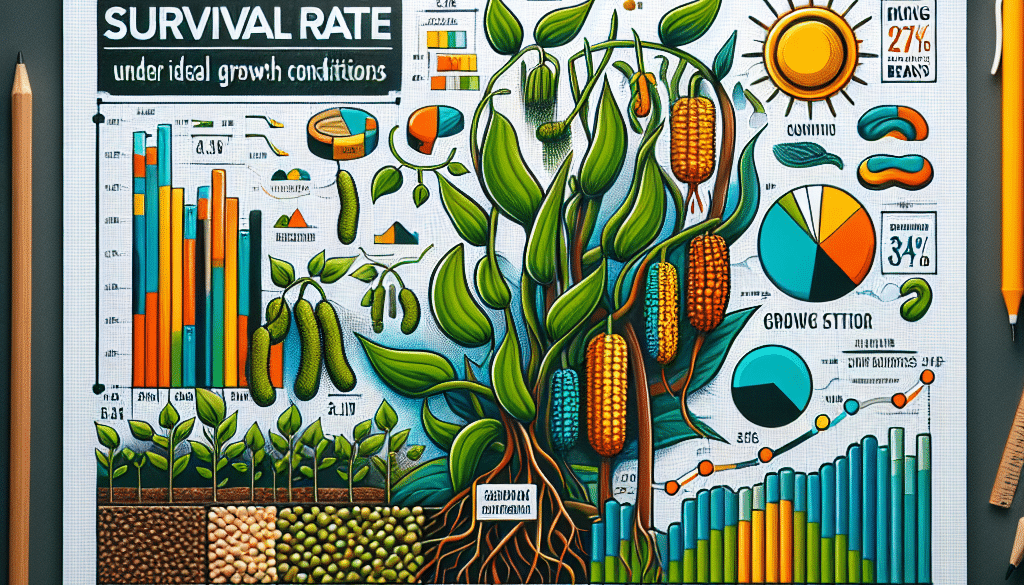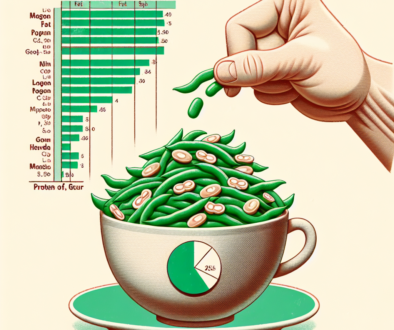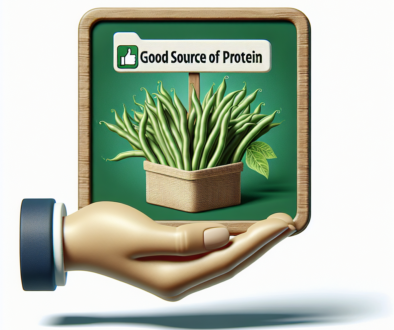What Is The Survival Rate Of Mung Beans?
-
Table of Contents
- Mung Bean Survival Rate: Maximizing Growth and Yield
- Understanding Mung Bean Cultivation
- Factors Affecting Mung Bean Survival Rate
- Maximizing Mung Bean Survival Through Best Practices
- Case Studies and Success Stories
- Statistical Insights into Mung Bean Survival
- Conclusion: Key Takeaways for Mung Bean Cultivation
- Enhance Your Nutrition with ETprotein’s Mung Bean Protein Products
Mung Bean Survival Rate: Maximizing Growth and Yield

Mung beans, known scientifically as Vigna radiata, are a staple legume crop in many parts of the world, particularly in Asia. They are valued for their nutritional benefits and versatility in various culinary applications. Understanding the survival rate of mung beans is crucial for farmers and agricultural professionals who aim to maximize their yield and ensure food security. This article delves into the factors that influence the survival rate of mung beans, supported by relevant examples, case studies, and statistics.
Understanding Mung Bean Cultivation
Mung beans are a warm-season crop that thrives in well-drained, sandy loam soils with a neutral pH. They are typically sown after the last frost of the season and require a growing period of 90 to 120 days to reach maturity. The survival rate of mung beans can be significantly affected by several factors, including climate, soil conditions, pest and disease management, and agricultural practices.
Factors Affecting Mung Bean Survival Rate
- Climate: Mung beans prefer warm temperatures and moderate rainfall. Extreme weather conditions such as drought or excessive rainfall can lead to reduced germination rates and increased susceptibility to diseases.
- Soil Conditions: Soil fertility and structure play a critical role in the growth of mung beans. Poor soil conditions can hinder root development and nutrient uptake, leading to lower survival rates.
- Pest and Disease Management: Pests such as aphids, mites, and bean flies, as well as diseases like powdery mildew and root rot, can significantly impact the survival and productivity of mung bean crops.
- Agricultural Practices: Proper seed selection, planting techniques, irrigation, and fertilization are essential for the successful cultivation of mung beans. Inadequate practices can lead to reduced plant vigor and lower survival rates.
Maximizing Mung Bean Survival Through Best Practices
To enhance the survival rate of mung beans, farmers must adopt best practices throughout the cultivation process. These include selecting high-quality seeds, implementing crop rotation to prevent soil depletion, and using integrated pest management (IPM) strategies to control pests and diseases. Additionally, maintaining optimal soil moisture through proper irrigation and applying the right amount of fertilizer can promote healthy growth and increase the survival rate of mung bean plants.
Case Studies and Success Stories
Several case studies have demonstrated the effectiveness of improved agricultural practices on the survival rate of mung beans. For instance, a study conducted in India showed that the use of biofertilizers and organic amendments led to a significant increase in mung bean yield and plant health. Similarly, research in the Philippines highlighted the benefits of using resistant varieties and IPM techniques to combat pests and diseases, resulting in higher survival rates and productivity.
Statistical Insights into Mung Bean Survival
Statistics from agricultural research indicate that the average survival rate of mung beans can range from 70% to 90%, depending on the growing conditions and management practices. Factors such as seed quality, planting density, and timely interventions against pests and diseases can influence these figures. By adhering to recommended practices, farmers can achieve survival rates on the higher end of this spectrum.
Conclusion: Key Takeaways for Mung Bean Cultivation
In conclusion, the survival rate of mung beans is contingent upon a multitude of factors, including environmental conditions, soil health, and agricultural management. By understanding and addressing these factors, farmers can improve the resilience and productivity of their mung bean crops. Key takeaways include the importance of selecting resistant varieties, employing sustainable farming practices, and being proactive in pest and disease management.
Enhance Your Nutrition with ETprotein’s Mung Bean Protein Products
If you’re looking to incorporate the nutritional benefits of mung beans into your diet, ETprotein offers a range of high-quality mung bean protein products. Their mung bean protein is characterized by a neutral taste, non-GMO, and allergen-free attributes, making it an excellent addition to various food and beverage applications. Whether you’re a manufacturer or a consumer seeking plant-based protein options, ETprotein’s offerings can meet your needs.
About ETprotein:
ETprotein, a reputable protein and L-(+)-Ergothioneine (EGT) Chinese factory manufacturer and supplier, is renowned for producing, stocking, exporting, and delivering the highest quality organic bulk vegan proteins and L-(+)-Ergothioneine. They include Organic rice protein, clear rice protein, pea protein, clear pea protein, watermelon seed protein, pumpkin seed protein, sunflower seed protein, mung bean protein, peanut protein, and L-(+)-Ergothioneine EGT Pharmaceutical grade, L-(+)-Ergothioneine EGT food grade, L-(+)-Ergothioneine EGT cosmetic grade, L-(+)-Ergothioneine EGT reference grade and L-(+)-Ergothioneine EGT standard. Their offerings, characterized by a neutral taste, non-GMO, allergen-free attributes, with L-(+)-Ergothioneine purity over 98%, 99%, cater to a diverse range of industries. They serve nutraceutical, pharmaceutical, cosmeceutical, veterinary, as well as food and beverage finished product distributors, traders, and manufacturers across Europe, USA, Canada, Australia, Thailand, Japan, Korea, Brazil, and Chile, among others.
ETprotein specialization includes exporting and delivering tailor-made protein powder and finished nutritional supplements. Their extensive product range covers sectors like Food and Beverage, Sports Nutrition, Weight Management, Dietary Supplements, Health and Wellness Products, and Infant Formula, ensuring comprehensive solutions to meet all your protein needs.
As a trusted company by leading global food and beverage brands and Fortune 500 companies, ETprotein reinforces China’s reputation in the global arena. For more information or to sample their products, please contact them and email sales(at)ETprotein.com today.












